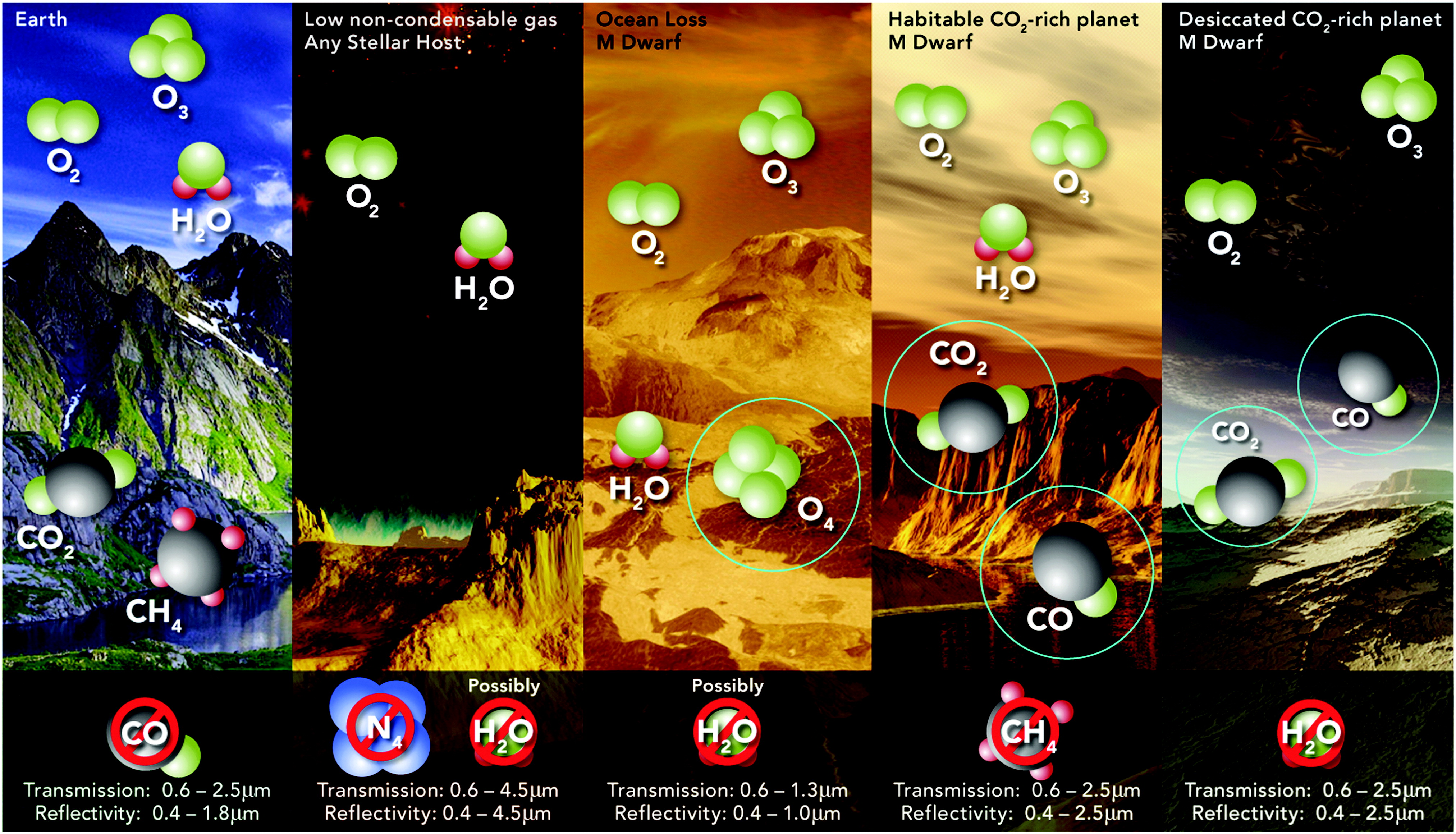-
Understanding Oxygen as an Exoplanet Biosignature
June 18, 2018 / Written by: Julie Fletcher
Potential false positive mechanisms for O2. This cartoon summarizes the atmospheric mechanisms by which O2 could form abiotically at high abundance in a planetary atmosphere (Meadows, 2017).Researchers are studying how environmental context can help determine whether oxygen (O2) detected in extrasolar planetary observations is more likely to have a biological source. The team provide an in-depth, interdisciplinary example of O2 biosignature identification and observation, which serves as the prototype for the development of a general framework for biosignature assessment.
The article, Exoplanet Biosignatures: Understanding Oxygen as a Biosignature in the Context of Its Environment, is an open access article in the journal Astrobiology. The work was supported by the NASA Astrobiology Program and in part by the NASA Astrobiology Institute’s Virtual Planetary Laboratory and Alternative Earths Teams.
Source: [Astrobiology]
- The NASA Astrobiology Institute Concludes Its 20-year Tenure
- Global Geomorphologic Map of Titan
- Molecular Cousins Discovered on Titan
- Interdisciplinary Consortia for Astrobiology Research (ICAR)
- The NASA Astrobiology Science Forum Talks Now on YouTube
- The NASA Astrobiology Science Forum: The Origin, Evolution, Distribution and Future of Astrobiology
- Alternative Earths
- Drilling for Rock-Powered Life
- Imagining a Living Universe
- Workshops Without Walls: Astrovirology